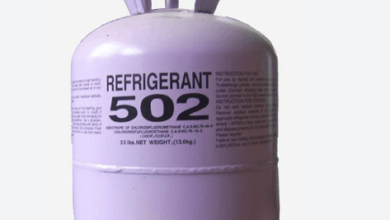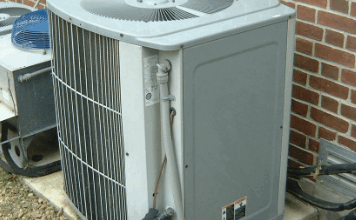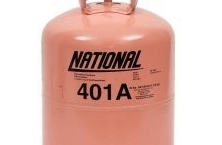T Type Thermocouple Guide – Features, Uses and Advantages
In industry, there are different types of thermocouples that we use in different areas. So, they are very important for temperature measurement from the different systems. Here, you can find detailed information about the t type of thermocouple applications that are very common. So, it is very important to check the general properties of the t type thermocouple applications to decide to buy them.
What is T Type Thermocouple?
T type thermocouples have a positive wire which is copper and a negative wire which is copper/nickel alloy. And we know the t type thermocouple applications as copper-constantan types.
The most important advantage of this type is, we can use them for cryogenic applications. At extremely low temperatures, they provide very good results. And this means you can use them for cryogenic applicaitons and low-temperature industrial applications.
The Temperature Range
The available temperature range of this type of thermocouple is -454 to 700 degrees Fahrenheit. This equals -270 to 370 degrees Celsius. So, this range makes it possible to use in a wide range of applications.
But the limiting factor on this temperature range is the extension wire and the type of insulation over the wires.
Accuracy
Also, the accuracy can change according to the brand and quantity of the thermocouple application that you are buying. But in general, the accuracy is +/- 1.0C or +/- .75% for all the temperature ranges.
µV per ºC Change
This change is referenced according to the 0 Celsius degrees. This value is 46 µV in general which is a very good range that will provide very high accurate results to the devices that they measuring this value.
Tolerance Classes for the T Type Thermocouple
The tolerance class for the thermocouple applications is very important while you are selecting the temperature range. So, it is very important to consider the class while you are buying the thermocouples.
Class I
- At the temperature range of -40 to 125 degrees Celsius, they provide +-0.5 degree Celsius tolerance.
- At the temperature range of 125 to 350 degrees Celsius, they provide ±0.004⋅ |t| tolerance.
Class II
- At the temperature range of –40°C to +133°C, they provide ±1.0°C tolerance.
- At the temperature range of 133°C to 350°C, they provide ±0.0075 ⋅ |t| tolerance.
Class III
- At the temperature range of –67°C to +40°C, they provide ±1.0°C tolerance.
- At the temperature range of –200°C to –67°C, they provide ±0.015⋅ |t| tolerance.
The tolerance values expressed for the second temperature range are the function of this temperature range. For example, the Class III type T thermocouple tolerance at the -65 degrees temperature is 0.015*65 = +-0.975 degrees Celsius.
The Advantages of Type T Thermocouple
There are different advantages to selecting the type T thermocouple applications for different situations and applications.
- As we stated above they provide very good measurement applications at very low temperatures. So, this makes them very useful for cryogenic temperature measurements in laboratory applications and thermal industrial applications.
- In oxidizing environments, they provide very good performance. Because the copper/constantan couple provides very good resistance to oxidizing environments.
- Also in moisturizing environments, they provide very good applications. They get no damage in the moisturizing atmosphere.
Different Insulation Materials
For these types of thermocouple applications, different manufacturers are using different insulation materials. The features change according to these insulation materials in general.
- MgO: Magnesium Oxide is one of the most common insulation materials that we use for these thermocouple applications. They provide very good applications for different kinds of systems. So, it is very important to use insulation materials that are very useful for high and low temperature ranges. And also, they are very resistant to mechanical effects such as vibrations, stresses, and other effects.
- Heat Resistant PVC: This is another insulation material that we are using in thermocouple applications. It is available for the temperature range between -22ºF to +220ºF.
- Fiberglass Insulation and Ceramic Insulation: This insulation class is one of the toughest işnsulatiomn. At the highest temperature up to 1500 degrees Fahrenheit, you can use the ceramşc and fiberglass insulated t type thermocouple applications.
Selectiong Guide for T Type Thermocouple Applicaitons

While you are selecting these thermocouples, there are different kinds of different factors that you need to consider about them. And selecting the proper one for your applications will be much easier.
- Connection type: The connection type of thermocouple applications is very important.
- Flat and round pin: They have pin systems that you can directly attach to the temperature reading machines.
- Wire leads: Also wire lead applications are very common in general. You can directly connect the leads of the copper and constantan to measure the temperature.
- Screw terminal: There are terminals for the thermocouple application. You can easily screw the thermocouple ends.
- Usage: Also it is very important to know which kind of application you want to use the thermocouple application. Gas, Liquid and Solid.
- Probe or Cable Length: It is also very important to assess how much length of cables or probes you need for the thermocouple applications. So, you can easily select the thermocouple applications for these probes.
- Color: Choose the colors according to the standardizations in different countries.
- International: The international color code for the thermocouples is brown and white for positive and negative wires respectively.
- ANSI/American: For the ANSI and American, the color codes for the thermocouples are blue and red.
- Japanese: According to Japanese standards, the color code is red and white.
- Response Time: Also while you are selecting a thermocouple application, it is very important to know the response time of them. It can be critical for such applications that you apply them.
- Mount Type: Select which kind of connection you want to build with the T type thermocouple application; Threaded, Adhesive, or Bolt-On.
Last Words on T Type Thermocouple Applications
These are the general points about the T type thermocouple applications. It will be much easier for you to decide to buy a thermocouple system for professional applications thanks to this guide. We tried to cover all the important points about them.
If you have any questions or comments about this topic, please leave them below. Your precious feedbacks are very important to us!
Similar topics;
Type E Thermocouple – Uses, Advantages, and Differences
40 Gal Pressure Tank – Will It Be Sufficient?
Turning Vanes in HVAC Applications
Cryogenic Gloves – Best Products to Consider!
Rectangular Duct Applications – Advantages and Uses
FAQs About T Type Thermocouple
It is a type of thermocouple that is suitable for low-temperature applications in general. They are very useful systems for different kinds of applications. The positive side is copper and the negative side is constantan. Because of is, they are known as copper-constantan thermocouples.
The difference between the K and T type thermocouples is the maximum temperatures that we use. The T type has a maximum temperature of 370 degree Celsius and type K have 1260 degrees Celsius maximum temperature use.
The temperature range of the type T thermocouple is -250 to 400 degree Celsius. So it is very useful for cryogenic applications.



